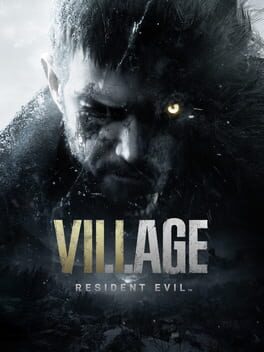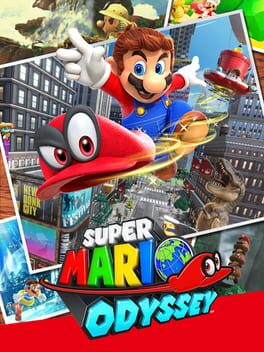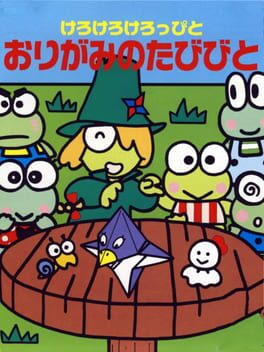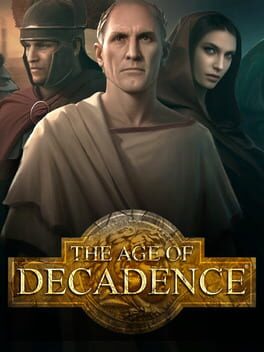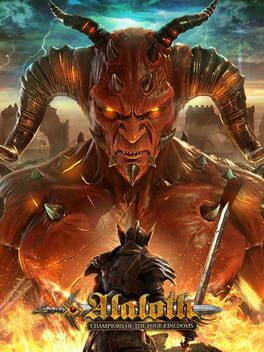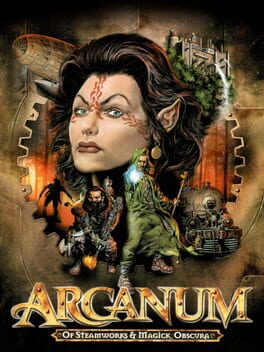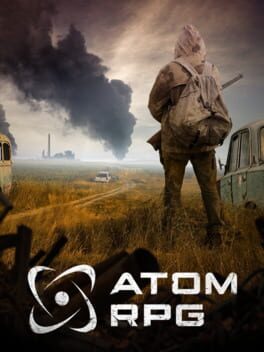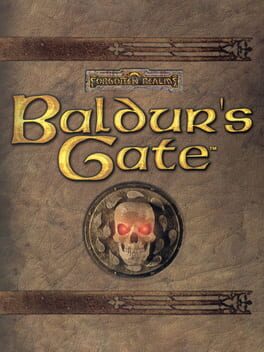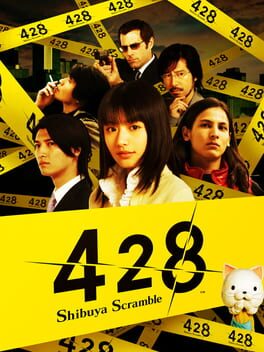alexandregmelo
11 reviews liked by alexandregmelo
Super Mario Odyssey
2017
MGS4 decimated all the symbols and mannerisms of the franchise, until there was nothing left to enjoy. Phantom Pain exists in a completely irrelevant space, it is a game that has no "story to tell", because all the stories are already established.
More post-modern than MGS2, it serves to prove that Metal Gear never had a "fourth wall" and canonize the player as a in-universe character. We are a phantom that repeats the steps of the legend, but we are the legend. Venom Snake doesn't take more actions than the player would, because he does what Big Boss would do... and the player has already been Big Boss -twice-.
You are Venom, Venom is Big Boss, Big Boss is Snake, Snake was Solid Snake and Raiden. Choose who you want to be today, choose the game you want to play. Let it die but with hope for the future.
More post-modern than MGS2, it serves to prove that Metal Gear never had a "fourth wall" and canonize the player as a in-universe character. We are a phantom that repeats the steps of the legend, but we are the legend. Venom Snake doesn't take more actions than the player would, because he does what Big Boss would do... and the player has already been Big Boss -twice-.
You are Venom, Venom is Big Boss, Big Boss is Snake, Snake was Solid Snake and Raiden. Choose who you want to be today, choose the game you want to play. Let it die but with hope for the future.
An unassuming bridge between past and future.
Paper is with us always, from birth to death.
The 3DO’s multimedia library is a largely bifurcated collective of (early) childhood edutainment software and adult only erotica. It is an often shocking contrast, the likes of Putt-Putt and Eigo de Go! occupying the same space as Immortal Desire or the aptly-titled Sex. It is a testament to the possibilities afforded to software developers during the multimedia boom of the early 1990s, CD-ROMs making the proliferation of minimal input, high-quality entertainment a reality for those too young to meaningfully engage with interactive software, and those too libidinous for anything but appeasement. This duality makes both extremes intriguing, and led me to gravitate towards Kero Kero Keroppi to Origami no Tabibito and its heart-achingly sweet cover art and premise. One of Sanrio’s cutest characters being taught how to do origami, something I did as a child and when starting university? Sign me up.
Understandably, given the very young audience, Keroppi and his friends are taught traditional, simple origami designs that teach the fundamentals of the craft. Keroppi’s designs are toy-like, including a jumping frog, paper popper, and traditional sumo wrestler. Keroleen’s are cute objects, being flowers, jewellery, and heart shaped stationery. The origami traveller teaches Ganta how to make animals, Kyorosuke to create practical objects like a tissue holder, boxes, and notebooks, and Noberun ‘mysterious’ geometric models and more complex designs befitting his friends’ categories.
Selecting a design shows a short animation of Keroppi and friends playing. Teru Teru gives the design a difficulty rating out of five, and Den Den is an ever-present adviser as the user goes through the design’s steps. The traveller helps out in video segments to demonstrate specific folds and methods. Each design is accompanied by a bonus interactive toy or clip from the Hello Kitty and Friends OVAs. It is altogether simple but effective as a tool for teaching and entertaining.
Paper is expression.
Paper craft is inextricable from childhood itself. Paper is cheap, plentiful, easy to work with, tidy, safe, and ultimately simple. Origami exemplifies the beauty of paper most clearly. It is free of embellishment and destruction. It is singular. It can be functional or aesthetic. It is as permanent and temporary as it needs to be. It represents a compounding of the care (or lack thereof) put into it. It is nearly ancient and incredibly contemporary. It is simple and boundlessly complex. It is flat and sculptural. It is childish and mature. Keroppi and his friends demonstrate this with aplomb. Origami is an expression of the self.
Like Keroppi, I dabbled in origami as a kid. I would make throwing stars of printer paper and mar them with staples and paperclips to give them heft. Cootie catchers were scrawled on. Jumping frogs cut for ease of creation. While entirely unintentional, this engagement with origami was a refusal of the art form itself by trying to make the paper into something it was not.
On the eve of entering university, I turned to origami again, crafting modular Sonobe models and simple animals. The discovery of contemporary origami by the likes of Gen Hagiwara, Jun Maekawa, and Hideo Komatsu gave me the drive to continue the craft further because of the possibilities in a single square of paper. As my first year of university drew to a close, I presented to my mom on her birthday a senbazuru I had been working on for the past eight months. She still has it hanging on the wall of her office. I folded cranes of all sizes and left them around campus for others to find and take, and though they would sometimes end up in the trash their intrinsic impermanence meant it never bothered me. It’s just paper after all. I made increasingly complex models to push my skills and try and impress a girl I liked. I got a cat and made her little paper doodads to bat about. I rather ironically got a crane permanently marked into my skin. And for whatever reason, I slowed down my craft and eventually stopped. A global pandemic began. My lone crane became surrounded by flowers. I sent parcels to my boyfriend and packed them with cranes I had folded long ago. The models I made that were strewn around my house were put away in drawers and bins, the senbazuru and some custom boxes I had made being the only concrete symbols of this years-long hobby of mine.
Paper is a constant.
What I adore most about Kero Kero Keroppi to Origami no Tabibito is that it brings a centuries old craft into the hypermodern age of multimedia. It could work just as well as a book or tape, but it takes advantage of this new medium to address the realities of a radically shifting world. Shortened attention spans are sated with visual stimuli. Origami as an expression of national, abstract culture is conveyed through materialistic, corporate culture to try and ensure the survival of the craft. It takes something so accessible it can be done with leaves and hides it behind the extreme cost barrier of a 3DO or FM Towns Marty. Most importantly, it presents these origami models as means to an expressive end beyond the purely aesthetic. It shows me what I was perhaps missing in my drive to make complex origami. I was missing the intrinsic fun of paper, of craft, of play.
Paper is with us always, from rebirth to death.
I began HRT in 2021. My flimsy paper birth certificate was marked by a gender I knew to be incorrect for a decade. In late 2022 I came out to my parents and underwent the legal hullabaloo necessary to fix the gender marker on my identification. The impermanent birth certificate was mailed off and destroyed. It was replaced by a polymer certificate. Paper that had been with me from birth saw me through to legal [rebirth/death].
I started Kero Kero Keroppi to Origami no Tabibito in the morning, sat at my desk in my underwear in a body radically different from the one I had when last I folded paper. A body that was new. I moved to the floor, and folded without the precision I once obsessed over. My imperfections compounded.
It was an expression of the self that was real. The sun broke through the clouds and was warm on my skin.
Paper is with us always, from birth to death.
The 3DO’s multimedia library is a largely bifurcated collective of (early) childhood edutainment software and adult only erotica. It is an often shocking contrast, the likes of Putt-Putt and Eigo de Go! occupying the same space as Immortal Desire or the aptly-titled Sex. It is a testament to the possibilities afforded to software developers during the multimedia boom of the early 1990s, CD-ROMs making the proliferation of minimal input, high-quality entertainment a reality for those too young to meaningfully engage with interactive software, and those too libidinous for anything but appeasement. This duality makes both extremes intriguing, and led me to gravitate towards Kero Kero Keroppi to Origami no Tabibito and its heart-achingly sweet cover art and premise. One of Sanrio’s cutest characters being taught how to do origami, something I did as a child and when starting university? Sign me up.
Understandably, given the very young audience, Keroppi and his friends are taught traditional, simple origami designs that teach the fundamentals of the craft. Keroppi’s designs are toy-like, including a jumping frog, paper popper, and traditional sumo wrestler. Keroleen’s are cute objects, being flowers, jewellery, and heart shaped stationery. The origami traveller teaches Ganta how to make animals, Kyorosuke to create practical objects like a tissue holder, boxes, and notebooks, and Noberun ‘mysterious’ geometric models and more complex designs befitting his friends’ categories.
Selecting a design shows a short animation of Keroppi and friends playing. Teru Teru gives the design a difficulty rating out of five, and Den Den is an ever-present adviser as the user goes through the design’s steps. The traveller helps out in video segments to demonstrate specific folds and methods. Each design is accompanied by a bonus interactive toy or clip from the Hello Kitty and Friends OVAs. It is altogether simple but effective as a tool for teaching and entertaining.
Paper is expression.
Paper craft is inextricable from childhood itself. Paper is cheap, plentiful, easy to work with, tidy, safe, and ultimately simple. Origami exemplifies the beauty of paper most clearly. It is free of embellishment and destruction. It is singular. It can be functional or aesthetic. It is as permanent and temporary as it needs to be. It represents a compounding of the care (or lack thereof) put into it. It is nearly ancient and incredibly contemporary. It is simple and boundlessly complex. It is flat and sculptural. It is childish and mature. Keroppi and his friends demonstrate this with aplomb. Origami is an expression of the self.
Like Keroppi, I dabbled in origami as a kid. I would make throwing stars of printer paper and mar them with staples and paperclips to give them heft. Cootie catchers were scrawled on. Jumping frogs cut for ease of creation. While entirely unintentional, this engagement with origami was a refusal of the art form itself by trying to make the paper into something it was not.
On the eve of entering university, I turned to origami again, crafting modular Sonobe models and simple animals. The discovery of contemporary origami by the likes of Gen Hagiwara, Jun Maekawa, and Hideo Komatsu gave me the drive to continue the craft further because of the possibilities in a single square of paper. As my first year of university drew to a close, I presented to my mom on her birthday a senbazuru I had been working on for the past eight months. She still has it hanging on the wall of her office. I folded cranes of all sizes and left them around campus for others to find and take, and though they would sometimes end up in the trash their intrinsic impermanence meant it never bothered me. It’s just paper after all. I made increasingly complex models to push my skills and try and impress a girl I liked. I got a cat and made her little paper doodads to bat about. I rather ironically got a crane permanently marked into my skin. And for whatever reason, I slowed down my craft and eventually stopped. A global pandemic began. My lone crane became surrounded by flowers. I sent parcels to my boyfriend and packed them with cranes I had folded long ago. The models I made that were strewn around my house were put away in drawers and bins, the senbazuru and some custom boxes I had made being the only concrete symbols of this years-long hobby of mine.
Paper is a constant.
What I adore most about Kero Kero Keroppi to Origami no Tabibito is that it brings a centuries old craft into the hypermodern age of multimedia. It could work just as well as a book or tape, but it takes advantage of this new medium to address the realities of a radically shifting world. Shortened attention spans are sated with visual stimuli. Origami as an expression of national, abstract culture is conveyed through materialistic, corporate culture to try and ensure the survival of the craft. It takes something so accessible it can be done with leaves and hides it behind the extreme cost barrier of a 3DO or FM Towns Marty. Most importantly, it presents these origami models as means to an expressive end beyond the purely aesthetic. It shows me what I was perhaps missing in my drive to make complex origami. I was missing the intrinsic fun of paper, of craft, of play.
Paper is with us always, from rebirth to death.
I began HRT in 2021. My flimsy paper birth certificate was marked by a gender I knew to be incorrect for a decade. In late 2022 I came out to my parents and underwent the legal hullabaloo necessary to fix the gender marker on my identification. The impermanent birth certificate was mailed off and destroyed. It was replaced by a polymer certificate. Paper that had been with me from birth saw me through to legal [rebirth/death].
I started Kero Kero Keroppi to Origami no Tabibito in the morning, sat at my desk in my underwear in a body radically different from the one I had when last I folded paper. A body that was new. I moved to the floor, and folded without the precision I once obsessed over. My imperfections compounded.
It was an expression of the self that was real. The sun broke through the clouds and was warm on my skin.
Moonlight Syndrome
1997
NieR: Automata
2017
The gorgeous movement animations present the cybernetic body as both fluid and brittle; the frame rate chops and it almost looks as though pixels are falling off with every violent act. The player and machine come together and collapse again in a swarm of noise. Within minutes it has more to say about apocalypticism and speculative futures, networked subjectivity, and the materiality of digital memory than any book I've ever come across.
Bloodborne
2015
It's strange, Bloodborne emphasises vertical exploration in level design and alien cosmology in vision but it also makes sure we're always confined to the matter of the violent instant. We have the ability to rotate the camera in a direction other to the one the player character faces — the player character moves, and the camera moves elsewhere — but the dislocation of camera from body rejects a sense of player-mastery over space (seeing more than the player character can see) and avatar-mastery (seeing all that the player character detects from their embodied position) alike. There is no negative space the player character can traverse. Instead Bloodborne's environment is a horrible amalgam of viscera, place, and action, that pulsate from the same sticky flesh. Everything in it glistens with the stickiness of connection. Pitch darkness draws things closer instead of pushing them away; the glow of lamps reveals the thickness of the atmosphere already present; the night sky reminds us that the earth is in the orbit of something else.
This claustrophobic, sticky presence is achieved through the synthesis of a heavy engine with agitated, jerky movement, and a design of disgusting tactility. There's an exhaustive precision to the hitboxes not found in a newer title like Elden Ring and this sets the player character as its own fragile body within the space, emphasising the dignity of the ongoing collision between equal adversaries. But then instead of slow and measured, Bloodborne encourages the balancing act of graceful movement and calculated barbarism. The roll mechanic is switched out for the dash, and so we sweep left and then and right, connect, and sweep again. It's both slippery and grounded, and success is entirely contingent on commitment to the flow of this weird ice dancing. To approach an enemy wanting to just inflict blunt violence is to fail, and so too is standing back to consider future action. If it's not felt, it won't work. The absence of shields for guns in parry is interesting, because there's no in-game penalty for getting the timing wrong, but the way it breaks the flow of combat spoils the feeling of its violent harmony. Backstabs too are arduous because they require multiple steps, the first charged. It's a quick victory but nothing next to the fluid carnage of the duel the game insists on and feels so good to perform.
Extending a weapon to its long-form is hardly ever practical, but emphasises the weird junk-mechanical nature of the instruments available. Assessing which weapons are required for which enemies is never a matter of looking at in-game spreadsheets but instead thinking about what the weapon's texture looks and feels like, and the quality of the enemies' flesh. We know when the jagged machinery of the saw will work, and when a clean cut would be better. In a world of crackpot physicians we're the worst, because instead of experimenting with different tools to deliver different ends, our vast and heavily modified toolset is entirely given to the act of bloodletting. There's a perverse intimacy to it that only grows more perverse and more intimate through the repetition of bloody violence. Every FromSoftware game is about a certain type of madness, but instead of the other games' desire to usurp one's tormentor (not as revenge, but to confirm the pain suffered was real and not a dream), Bloodborne unambiguously dramatises the madness of catharsis and will to eruption. The fight with Gehrman is most plain about this. We rush through white lilies, swaying at our feet, romantic music accompanying the game's climactic pas de deux.
Bloodborne lovingly invokes the vampire in order to place the brokenness of modernity alongside the endurance of the flesh. At a distance the romanticism of bodily fluids ("Will you drink my blood?") is contrasted with a Lovecraftian view on the insignificance of human life in the face of the cosmic, but for Miyazaki the vampire and the alien are consistent in the way they relate to the human body. Stacey Abbott points out that Méliès' film Le manoir du diable appeared before Bram Stoker's masterpiece, and that it conflates the vampire with the scientist, transfiguring human and nonhuman forms, conjuring visions, and deforming temporal order. The emphasis in that period was the more we understood about reality through novel scientific methods and instruments, the less 'real' and hospitable the world around us came to seem. Bloodborne follows in this tradition, using blood as the living string between cosmic, body horrific, and epistemological distortion, nodding to the dual concerns of horror fiction and scientific discovery. Its science-fiction is first and foremost of the body: what's seen in the cosmos implicates itself in the flesh.
Bram Stoker's vampire actually appears in the margins of records encountered within the volume, giving him the kind of formless-yet-omnipresent quality we might now associate with Miyazaki's reading of Lovecraft. The forces that most concern us are the ones only glimpsed in objects, conflicting manuscripts, and strange patterns of animal behaviour, and otherwise evade our comprehension. Alison Sperling has criticised Lovecraft scholars for placing too much of an emphasis on the limits of human knowledge — what Thacker characterises as "life according to the logic of an inaccessible real" leads to a lot of thinking about thinking, and that's all. A better picture of this horror, Sperling argues, is life completely saturated in the real. Miyazaki takes this reading too: the point is never the presence of an ancient or extraterrestrial force in itself, but the way awareness of these forces disturbs embodied reality. The revelation of the God that structures reality is that we are its dolls; the revelation of the alien that birthed us is that we are some mutant synthesis of the human and nonhuman, which is to say the human as we know it never was.
And so what's so good here is that it's all so addicting. Miyazaki does not expect us to recoil from the alien flesh but to embrace it, to want to see ourselves turned inside out along with the rest of the world. Everything in Bloodborne is calibrated to draw us into its ultraviolent dance, so we can feel it in our nervous system. Then, coated in blood, and guts spilled across the room, we're not supposed to be able to tell whose is whose. There's a tragedy to this vulnerable body that seems to exist just to erupt, but in that is ecstasy.
This claustrophobic, sticky presence is achieved through the synthesis of a heavy engine with agitated, jerky movement, and a design of disgusting tactility. There's an exhaustive precision to the hitboxes not found in a newer title like Elden Ring and this sets the player character as its own fragile body within the space, emphasising the dignity of the ongoing collision between equal adversaries. But then instead of slow and measured, Bloodborne encourages the balancing act of graceful movement and calculated barbarism. The roll mechanic is switched out for the dash, and so we sweep left and then and right, connect, and sweep again. It's both slippery and grounded, and success is entirely contingent on commitment to the flow of this weird ice dancing. To approach an enemy wanting to just inflict blunt violence is to fail, and so too is standing back to consider future action. If it's not felt, it won't work. The absence of shields for guns in parry is interesting, because there's no in-game penalty for getting the timing wrong, but the way it breaks the flow of combat spoils the feeling of its violent harmony. Backstabs too are arduous because they require multiple steps, the first charged. It's a quick victory but nothing next to the fluid carnage of the duel the game insists on and feels so good to perform.
Extending a weapon to its long-form is hardly ever practical, but emphasises the weird junk-mechanical nature of the instruments available. Assessing which weapons are required for which enemies is never a matter of looking at in-game spreadsheets but instead thinking about what the weapon's texture looks and feels like, and the quality of the enemies' flesh. We know when the jagged machinery of the saw will work, and when a clean cut would be better. In a world of crackpot physicians we're the worst, because instead of experimenting with different tools to deliver different ends, our vast and heavily modified toolset is entirely given to the act of bloodletting. There's a perverse intimacy to it that only grows more perverse and more intimate through the repetition of bloody violence. Every FromSoftware game is about a certain type of madness, but instead of the other games' desire to usurp one's tormentor (not as revenge, but to confirm the pain suffered was real and not a dream), Bloodborne unambiguously dramatises the madness of catharsis and will to eruption. The fight with Gehrman is most plain about this. We rush through white lilies, swaying at our feet, romantic music accompanying the game's climactic pas de deux.
Bloodborne lovingly invokes the vampire in order to place the brokenness of modernity alongside the endurance of the flesh. At a distance the romanticism of bodily fluids ("Will you drink my blood?") is contrasted with a Lovecraftian view on the insignificance of human life in the face of the cosmic, but for Miyazaki the vampire and the alien are consistent in the way they relate to the human body. Stacey Abbott points out that Méliès' film Le manoir du diable appeared before Bram Stoker's masterpiece, and that it conflates the vampire with the scientist, transfiguring human and nonhuman forms, conjuring visions, and deforming temporal order. The emphasis in that period was the more we understood about reality through novel scientific methods and instruments, the less 'real' and hospitable the world around us came to seem. Bloodborne follows in this tradition, using blood as the living string between cosmic, body horrific, and epistemological distortion, nodding to the dual concerns of horror fiction and scientific discovery. Its science-fiction is first and foremost of the body: what's seen in the cosmos implicates itself in the flesh.
Bram Stoker's vampire actually appears in the margins of records encountered within the volume, giving him the kind of formless-yet-omnipresent quality we might now associate with Miyazaki's reading of Lovecraft. The forces that most concern us are the ones only glimpsed in objects, conflicting manuscripts, and strange patterns of animal behaviour, and otherwise evade our comprehension. Alison Sperling has criticised Lovecraft scholars for placing too much of an emphasis on the limits of human knowledge — what Thacker characterises as "life according to the logic of an inaccessible real" leads to a lot of thinking about thinking, and that's all. A better picture of this horror, Sperling argues, is life completely saturated in the real. Miyazaki takes this reading too: the point is never the presence of an ancient or extraterrestrial force in itself, but the way awareness of these forces disturbs embodied reality. The revelation of the God that structures reality is that we are its dolls; the revelation of the alien that birthed us is that we are some mutant synthesis of the human and nonhuman, which is to say the human as we know it never was.
And so what's so good here is that it's all so addicting. Miyazaki does not expect us to recoil from the alien flesh but to embrace it, to want to see ourselves turned inside out along with the rest of the world. Everything in Bloodborne is calibrated to draw us into its ultraviolent dance, so we can feel it in our nervous system. Then, coated in blood, and guts spilled across the room, we're not supposed to be able to tell whose is whose. There's a tragedy to this vulnerable body that seems to exist just to erupt, but in that is ecstasy.
